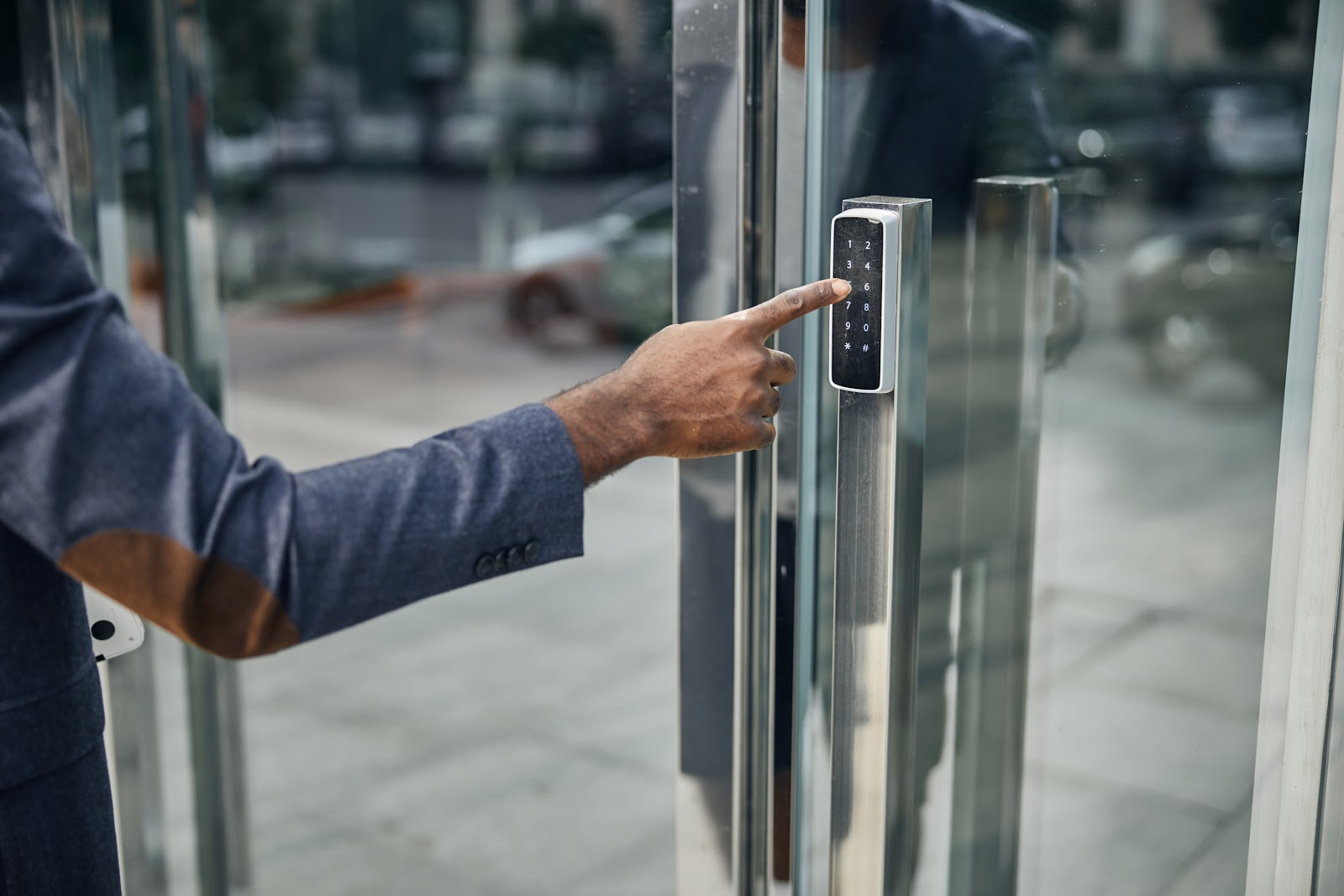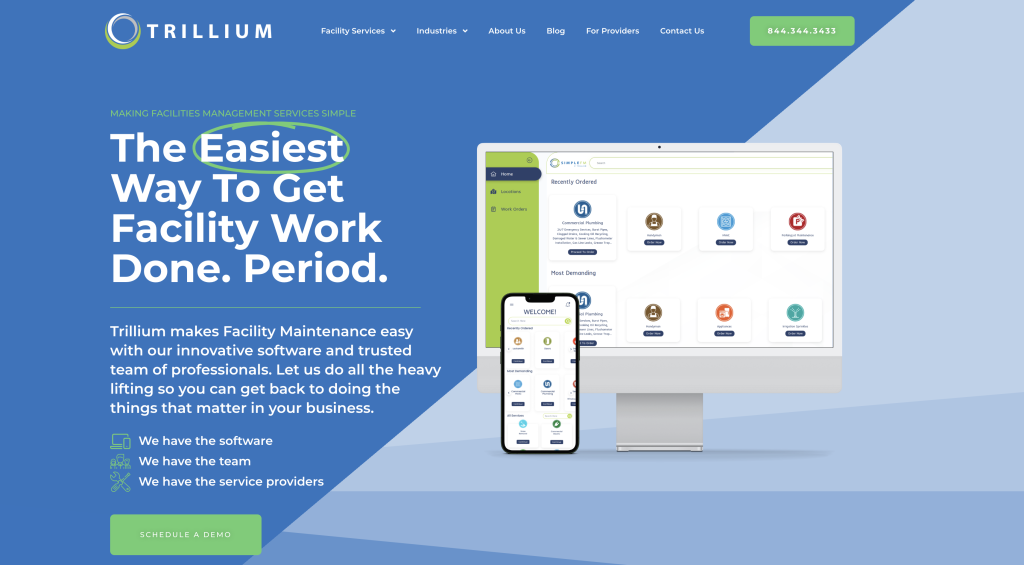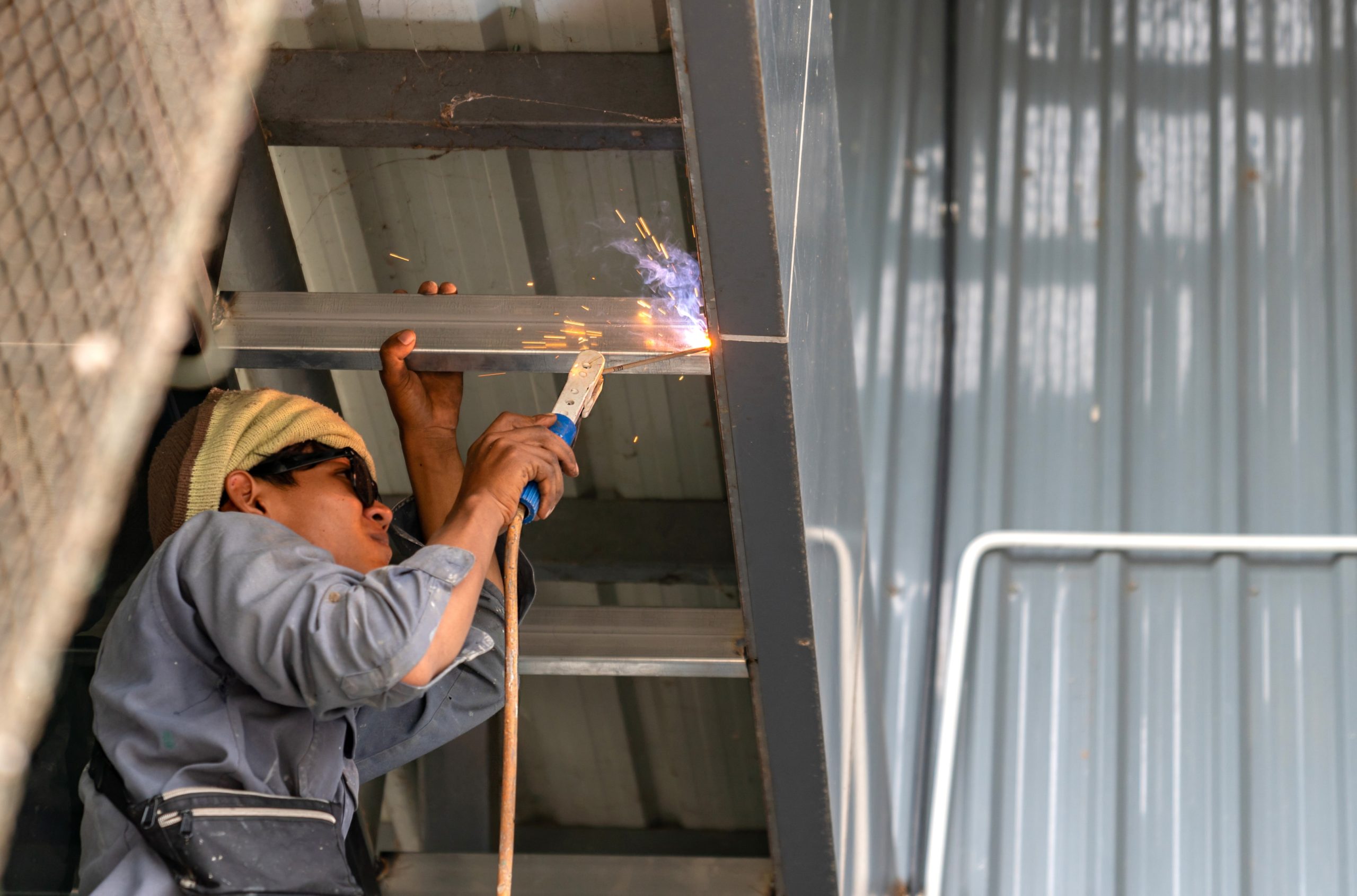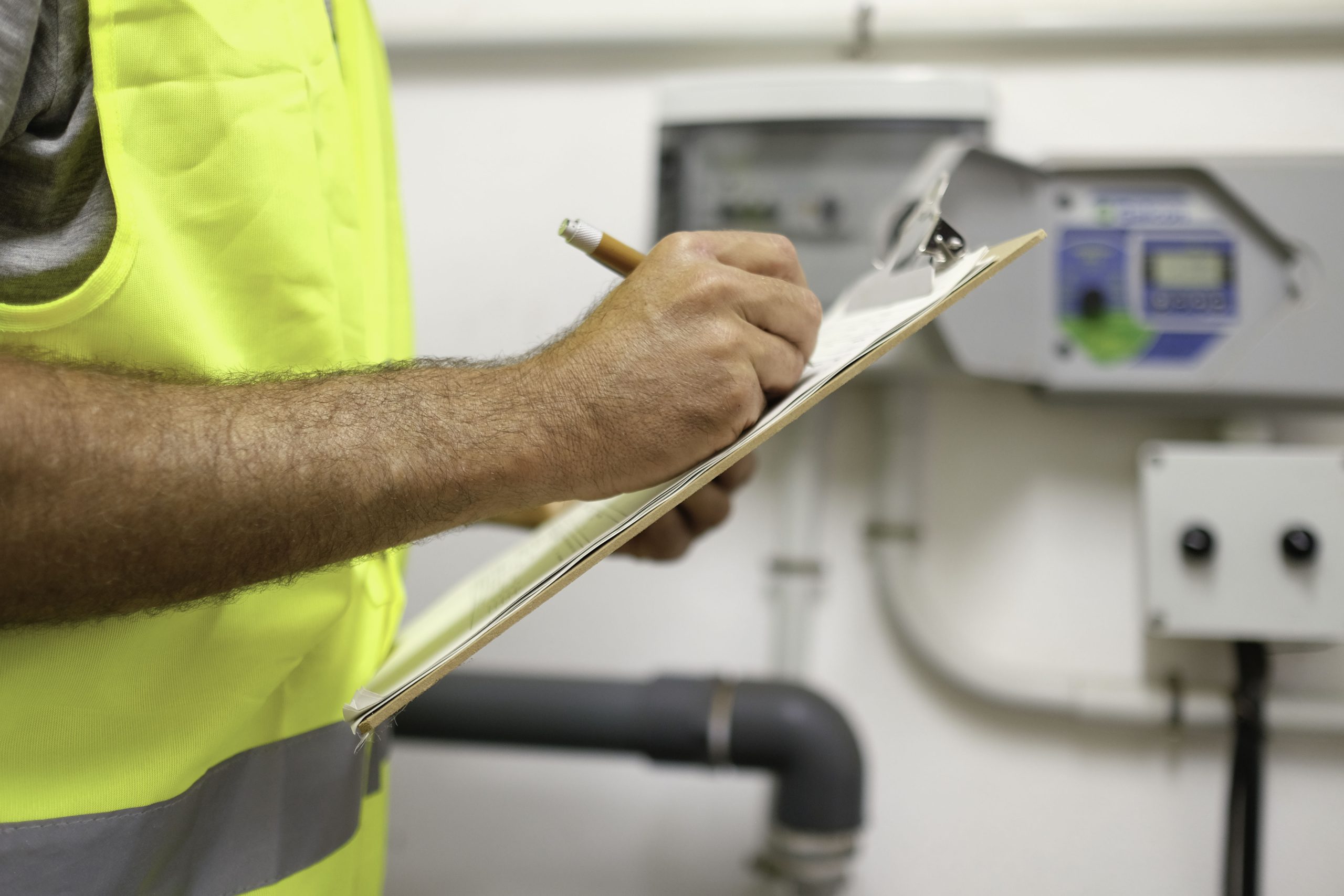Doors aren’t something most people think about until they cause problems. A broken entry door slows down business. A security issue puts the property at risk. A malfunctioning automatic door frustrates customers and employees. When doors don’t work properly, they create disruptions, lead to safety concerns, and even put a building out of compliance.
Commercial building door management takes more than just quick fixes. A solid plan prevents costly repairs, controls access, and helps everything function as it should. Whether it’s security, access control, or routine maintenance, a structured approach keeps operations on track.
Let’s break down the best ways to manage commercial building doors so your business can run without unnecessary setbacks.
Types of Commercial Doors
Doors control security, keep things running, and set the tone for how people move through a space. The wrong door can lead to constant repairs, security risks, and frustrated customers and employees.
If your building receives a lot of foot traffic, automatic sliding doors make entry easier. Revolving doors help reduce drafts and keep temperatures steady inside. Fire-rated doors buy time in emergencies by slowing the spread of smoke and flames. Security doors built with reinforced steel or bulletproof glass help protect high-risk areas.
Picking the best door starts with how it will be used. A storefront needs something inviting and durable. An office building may need a keycard or biometric access. Warehouses and industrial spaces often have roll-up garage doors that fit large equipment.
Getting the right door from the start saves time, cuts down on maintenance, and helps avoid unnecessary problems.
Keep Your Building Secure With Access Control Systems
Traditional keys get lost, copied, or passed around, making security harder to manage. Commercial access control systems give you an easier way to control who gets in without constantly dealing with outdated security methods.
How Access Control Systems Work
Instead of fumbling with keys, access control systems use keycards, mobile credentials, PIN codes, or biometrics to let people in. If an employee switches roles or a contractor wraps up a job, their access can be updated instantly. No running around changing locks or wondering who still has an old key.
These systems also track who comes and goes, so there’s never a question about who was in the building. You can also select different access methods based on security needs, whether it’s biometric scanning, key fobs, or mobile credentials.
The most common types of access control systems include:
- Cloud-based access control: Lets you manage entry from anywhere using an online platform. If an employee forgets their pass, you can grant access remotely.
- On-premise access control: Everything is controlled on-site, giving businesses direct management over security settings.
- Hybrid systems: A mix of both, allowing remote management while keeping certain functions in-house.
A reliable access control system keeps daily operations on track, helping employees, customers, and vendors get where they need to go without unnecessary delays.
Boost Security With Access Control and Surveillance
Access control keeps unauthorized people out, but cameras provide proof of who enters and exits. If a security issue comes up, video footage fills in the gaps that access logs cannot capture. Cameras help deter break-ins and prevent unauthorized access by making it clear that all activity is being recorded.
Integrating these systems makes security easier to manage. A single dashboard can show door access logs alongside live video feeds, giving real-time visibility into who is in the building. If someone tries to use stolen user credentials or force entry, alerts can be sent instantly so the right people can respond.
Intrusion Detection and Emergency Alerts
Access control and surveillance become even more effective when paired with intrusion detection. Motion sensors, glass break detectors, and alarm systems help identify threats before they become bigger problems. If a door is forced open after hours, the system can trigger an alert and notify the right people immediately.
This kind of setup improves security by removing blind spots. Instead of relying on employees to report suspicious activity, automated systems track what is happening and flag issues right away. This approach reduces risk and keeps buildings safer without requiring constant monitoring.
Manage Security Access Without Slowing Down Daily Operations

Security matters, but it shouldn’t make daily tasks harder. Employees, vendors, and visitors need to get where they’re going without unnecessary delays. A well-planned access control solution keeps entry controlled while allowing the right people to move as needed.
Make Access Simple for Employees and Vendors
Managing who can enter a commercial property should not be complicated. Digital credentials allow you to grant, update, or revoke access instantly without dealing with lost keys or outdated keycards. Mobile access control, PIN codes, and biometric scanners let employees and authorized vendors enter without waiting for someone to unlock doors.
You can also schedule access permissions to reduce security risks. Vendors can be allowed entry during specific hours, while employees can be restricted to certain areas based on their roles. This prevents unnecessary access while keeping the workplace functional.
Keep Visitor Access Secure
Visitors need to enter the building, but handing out keycards or requiring manual sign-ins slows everything down. A visitor management system can issue access control credentials that expire after a set time. This keeps security controlled while allowing guests to move through the building without constant supervision.
Integrate Access Control With Other Systems
A locked door isn’t enough if you don’t know who’s on the other side. Pairing access control with security cameras lets you see exactly who’s coming in and out. If someone tries to use a stolen keycard, there’s real-time footage to check instead of scrambling to piece together what happened.
Tracking access should be easy, but too many businesses are stuck with outdated systems that slow them down. When access control syncs with cameras and alarms, alerts happen instantly, and entry logs stay accurate without extra effort. If a door is forced open, you’ll know right away.
Paper sign-in sheets and manual check-ins don’t cut it anymore. A modern access system issues digital visitor passes, so guests get secure temporary access without making security a hassle. You’ll always have a clear record of who’s in the building and why without digging through stacks of paperwork.
Best Practices for Commercial Door Maintenance and Longevity
An access control system can only do so much if the doors themselves are in bad shape. A misaligned door, a faulty lock, or a broken closer slows people down and creates security risks. Regular maintenance keeps doors working properly and prevents expensive repairs later.
Prevent Wear and Tear Before It Becomes a Problem
Doors in commercial buildings handle heavy traffic daily. Over time, hinges loosen, locks wear out, and closers stop functioning correctly. A simple routine of checking hinges, tightening hardware, and lubricating moving parts keeps doors secure. Without maintenance, even the best security systems won’t be as effective.
Watch for Weather Damage
Exterior doors face constant exposure to rain, snow, and extreme temperatures. Worn-out seals and gaps in the frame let in drafts and increase energy costs. These weak points also make it easier for someone to bypass physical security measures. Replacing weather stripping and fixing minor damage early keeps doors sealed and secure.
Know When Repairs Are No Longer Worth It
Some doors break down so often that repairs are a waste of time and money. If a door keeps sticking, slamming shut, or failing to close properly, replacing it may be the better option. Newer doors often work better with remote access systems and modern locks. Upgrading to stronger, energy-efficient doors reduces maintenance and enhances security.
Compliance and Safety Regulations for Commercial Doors
Door management is about more than security. Safety laws protect employees, customers, and tenants. Ignoring compliance regulations can lead to fines, liability issues, and serious risks. Most violations are avoidable with routine checks and simple upgrades.
Check That Doors Meet Accessibility Standards
Accessibility is a legal requirement. Commercial buildings must have doors that accommodate individuals with disabilities. This includes proper door width, clearance space, and easy-to-use handles. Automatic door openers help, but they need to work correctly. A door that is too heavy or does not open fully creates obstacles for those who need assistance.
Follow Fire Safety Standards
Fire-rated doors are required in many buildings, especially in hallways, stairwells, and emergency exits. These doors slow the spread of fire and smoke, giving people time to evacuate. But they only work if they are in good condition. Damaged seals, broken latches, or propped-open fire doors put people at risk. Regular inspections keep doors compliant and ready for emergencies.
Keep Emergency Exits Clear and Functional
Blocked or broken exit doors create serious hazards. Emergency exits must open easily and have panic hardware that allows people to leave quickly. If a door sticks, has a faulty latch, or is blocked by equipment, it needs immediate attention. Routine inspections prevent safety risks and help avoid violations.
Don’t Let Faulty Doors Disrupt Your Business Operations

Technology has made door security and access management easier than ever. A cloud-based system allows remote updates. Integrated security systems provide real-time monitoring. Modern doors last longer with less upkeep. Reliable internet access also supports cloud-based controls, letting businesses manage doors from anywhere.
For businesses that want facility maintenance without the unnecessary costs and restrictions, Trillium provides a better way. With 24/7 service management, expert facility maintenance, and an easy-to-use work order platform, businesses can handle access control, repairs, and compliance in one place.
Unlike traditional facilities management, Trillium’s solution is free to use, with no fees or hidden markups. You only pay for the services they need. There are no unnecessary on-site personnel, no long-term contracts, and no minimum order volumes. The flexible model saves money while keeping buildings safe, secure, and operational.
Need a better way to handle door maintenance and security? Trillium makes it easy to submit and manage work orders anytime, from anywhere. Contact Trillium today to explore service options and keep your building secure.
FAQs About Commercial Building Door Management
How much does a door access control system cost?
The cost of a door access control system depends on the number of entry points, features, and technology used. Basic systems start around $500 to $1,200 per door, while advanced options with biometric authentication or cloud-based remote access can cost $2,000 or more per door.
Do commercial buildings need fire-rated doors?
Yes, many commercial buildings are required to have fire-rated doors. These doors slow the spread of fire and smoke, giving people more time to evacuate. Fire codes vary by location, but fire-rated doors are typically required in stairwells, corridors, and emergency exits. Regular inspections help keep them compliant and functional.
What are the four major types of door access control systems?
The four major types of access control systems are:
- Discretionary access control (DAC): The owner or administrator decides who gets access.
- Mandatory access control (MAC): Access is based on strict policies, often used in high-security environments.
- Role-based access control (RBAC): Access permissions are granted according to specific roles, making it a practical choice for businesses.
- Rule-based access control: Access is granted or restricted based on specific conditions, such as time of day or location.
What is a commercial door installer?
A commercial door installer specializes in installing, repairing, and maintaining doors in business properties. They work with fire-rated doors, security doors, automatic doors, and access control systems.









